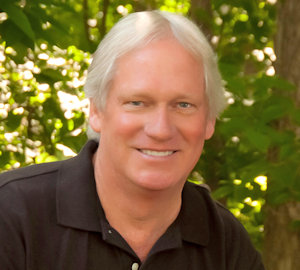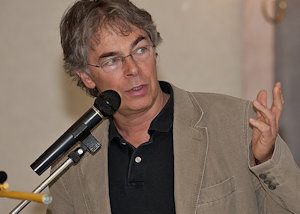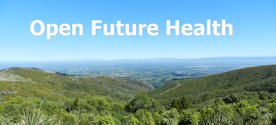Paleo v Banting
It entirely depends on what you are trying to achieve. Paleo for auto-immune health problems, but Banting if you just need to lose weight. Neither diet requires you to exercise, but if you're not very obese you should exercise, everyone needs exercise, or hard physical work, but the right diet is essential FIRST.
A very strict Paleo diet, is essentially eating like a carnivore. People may want to do that if they suffer from an autoimmune disease, or depression, that they think might be caused by a leaky gut. There are some examples on the expertise page. In Paleo theory, that's the most natural diet, and the permeability of the gut should be a tight as you can get it. In less than a month, you should know if that's working for you.
Still very much Paleo, you might add some vegetables, green leaf types, carrot and parsnip or sweet potato.
A stage further into a more diverse eating style would be to add cheese. Adding milk of yoghurt is starting to go beyond Paleo, but this is your diet, so you choose. Many people run into trouble drinking milk. They may be lactose intolerant.
It's been suggested to me that multiple sclerosis is caused by a milk protein that has a surface-key that attaches to the myelin sheath protecting the nerves. The immune system recognises the foreign body and attacks it, but also damages the myelin sheath. That concerns my family. Valid or not I can't tell.
The objective in the Paleo diet is to get the best quality healthy nutrition possible. On a Paleo diet you might well be in ketosis, but that's not the objective.
Banting on the other hand is much more liberal about what you choose to eat. The objective is to minimise carbohydrate intake to less than 50gm a day so that you are in mild ketosis all the time. To do that all you need to know is where carbohydrates are hiding, and count them.
When Banting you can eat as much fat and protein as you like, although if the weight loss that you want isn't happening, you might need to restrict protein too.
If you eat no bread, potatoes, rice or pasta, no cakes, or biscuits and nothing else made with flour. Then you hardly need to count carbohydrates at all. There is carbohydrate in leafy vegetables, and in carrots for instance. But keeping below 50gm a day isn't hard.
On the other hand if you have type I diabetes, or type II diabetes, or if you are trying to avoid Alzheimer's disease you might like to keep your carbohydrates below 25gm a day. That's more difficult of course, but you have excellent health reasons for being strict with yourself. Most diabetics die in their 70's, too often with severe disability. If you can keep INSULIN low throughout your life, the amount of vascular inflammation will be low and you can probably add ten plus years to you lifespan and avoid all those nasty disabilities. ![]() Richard Bernstein has done exactly that.
Richard Bernstein has done exactly that.
You might also use Banting to fuel your athletic endeavors. Apparently you get into ketosis and train in that state. If it's race day, or you need a high performance you can eat a small amount of high carbohydrate food. That will boost your glycogen capacity, and give you a little extra, if burning fat isn't quite enough.
Both Paleo and Banting require intelligent eating. You are eating to achieve some purpose that's meaningful in your life. To look better, to be more healthy, to perform better, or to set a good example to other family members, maybe to your children and grandchildren.
Vegetarian Paleo?
There is no such thing as vegetarian Paleo. The whole basis of any Paleo diet is that meat, fish and the fat from meat and fish. Eggs are also very important in a Paleo diet.
Loren Cordain writes, "While I respect everyone's right to the diet and food they think is most suitable, ... as a scientist I cannot support any vegetarian diet. The vegetarians' ideas about healthy eating are wrong." In other articles Cordain attacks the view of the American Dietetics Society's view that a "well designed vegetarian diet is adequate for every cycle of life, pregnancy, lactation, infancy and childhood." Cordain says that this recommendation is irresponsible and in the case pregnancy and lactation, is dangerous to mother, fetus and child.
If you are currently vegetarian or vegan, your highest expectation on the basis of scientific data may be to survive; but suffer by getting tumors, heart disease, obesity and other health problems. Lifelong dietary restraint will not prolong your life. Instead there will be a shortage of nutrients that will cause you health problems and illness. If you put your vegetarian diet on your baby or on your children, they will suffer too. Not a very good prospect. Examine the data and ![]() learn for yourself the science of vegetarian diets, and future poor health that is common among vegetarians.
learn for yourself the science of vegetarian diets, and future poor health that is common among vegetarians.
Loren Cordain's Research
229 Hunter-Gatherer Populations
"Our study, in which we analyzed 229 hunter-gathering populations, showed that there was not one among these ethnic groups that would choose a vegetarian diet. In fact, where and when animal foods are available, these natural peoples always choose to eat those. There was a strong nutritional preference for animal nutrition in the 229 population groups we have examined."
 |
| Loren Cordain |
|---|
"Most of the population (73%) included more than 46% of their daily intake in the form of animal food. The predominance of animal foods is explained by the fact that with the same energy input, more energy output can be obtained from animal food, than plants, as demonstrated by the optimum nutrition theory."
The preference and appetite of man for meat, poultry and other animal food has a long evolutionary history. In Africa, 2.5 million years of fossilized animal parts were found with the traces of stone tools used for processing. Such evidence leaves little doubt as to the fact that all human species have eaten animal foods from the beginning. We are carnivores rather than omnivores.
Researchers are able to determine the ratio of animal and plant nutrition for extinct human (hominoid) species based on the isotopes of fossilized bones. Each of our groups, examined so far, shows up to 2.5 million years ago a typical isotope image of a meat-based diet. Further, we can compare our biochemical and anatomical characteristics to the cat, which is completely predatory, with the same biochemical pathways that characterize animals consuming lots of meat.
Cordain's Concept of the Paleo Diet
The Paleo diet advises eating only foods available to Paleolithic humans. Because our genes change very slowly, it's assumed that humans are still best adapted to the diet that was forced on pre-human species and early humans by a series of ice ages. Habitat protected by caves and close to the sea, ensured warmth and a constant food supply. If land animals or birds could be hunted that was a bonus.
In the original description of the Paleo diet in Cordain's 2002 book, he advocated eating as much like Paleolithic people as possible, which meant:
55% of daily calories from seafood and lean meat, evenly divided
15% of daily calories from each of fruits, vegetables, and nuts and seeds
there was no dairy, almost no grains (which Cordain described as "starvation food" for Paleolithic people), no added salt, no added sugar
The Paleo diet is based on avoiding modern processed foods and dairy foods.
Michael R. Eades and Mary Dan Eades in their book Protein Power, explain it this way.
The base of the diet is grass-fed meat and wild game, including all the organs and the fat. Seafood if available.
Fibrous non-starchy vegetables, as desired and if available.
Moderate servings of nuts or seeds. Fruit and berries in small servings only in season.
New Paleo Diet "Innovations"
There is wide variability in the way this is interpreted and an ongoing debate over the specific foods eaten by our ancestors. For the satisfaction of many Americans, vegetables have become significant in the way the diet is usually described.
In her book "Primal Body, Primal Mind" Nora R Gedgaudas writes that "no known primitive culture in the history of the human species has ever adopted vegetarianism by choice."
US Vegetarian Influence
In the hands of many bloggers and people who publish recipes under the "Paleo" flag, there has been a strong shift towards a vegetarian diet with some meat and fish. That might make marketing sense, but it means that when we talk about Paleo, it becomes less and less clear what we are talking about.
Hungarian writer Gábor Szendi, writes about the "bizarre botanical's on the market, and the recipes infected with Paleo," but prepared by people who "do not understand the source of Paleo science." Gábor Szendi talks about the "mad Paleo movement."
In the same way to talk about low-fat Paleo, is to completely misunderstand the essence of this primitive dietary pattern.
Other Contributions Based on Science
 |
| Gábor Szendi |
|---|
In 1930 McClellan and Du Bois, from the Mayo Clinic, published a paper describing the meat and fat based diet they were using for the treatment of epilepsy. Without input from anthropology, this diet still represents quite well what Walter L. Voegtlin and Loren Cordain were later to describe. Voegtlin completely excludes raw vegetables.
Anthropologist and explorer Vilhjalmur Steffansson, added greatly to our knowledge of the Inuit who in the early 1900's lived on seal meat and fish alone, for most of every year. He went to great lengths to try and convince the US Army and medical doctors and the general public about this. Steffansson was convinced the when fed only on animal fat, meat and the offal from those animals the human diet was full and very healthy.
| Nora Gedgaudas |
|---|
Staffan Lindeberg, in the 1990's studied the nutrition and health of the people on Kitava Island in the Pacific. From that study he developed some conclusions about Paleolithic diets.
In Hungry, in 2009, Gábor Szendi wrote a book not available in English. The title translates to "Paleolithic Nutrition." I've only read about 10 pages from his blog. He seems to be strongly committed to good science, but he also recognises that you also need to be a realist. It's not possible to reconstruct the dietary conditions of the past. There are social reasons for allowing some tolerance because in our society protein is expensive. He says that it's not original sin, to accept a meal prepared by contains legumes, or cheese or bread-crumbs. You need to make compromises. It's possible that the chef cooked the chicken in vegetable oil, but don't make a fuss about that, you can eat a more pure form of Paleo tomorrow.
The same year in the USA, Nora T Gedgaudas published "Primal Body, Primal Mind." I now have a copy of this book but I have not read it. It's a well designed book, with a large index, and several pages of references to Paleo resources. From what I can tell this is a well founded book, with sensible advice.
